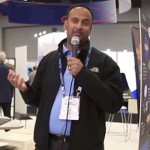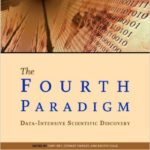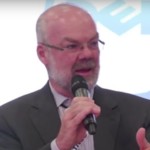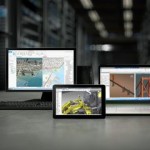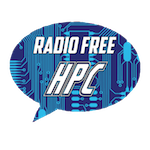Today Microsoft released an updated version of Microsoft Cognitive Toolkit, a system for deep learning that is used to speed advances in areas such as speech and image recognition and search relevance on CPUs and Nvidia GPUs. “We’ve taken it from a research tool to something that works in a production setting,” said Frank Seide, a principal researcher at Microsoft Artificial Intelligence and Research and a key architect of Microsoft Cognitive Toolkit.
Slidecast: Running HPC Simulation Workflows in Microsoft Azure
In this video from the Microsoft Ignite Conference, Tejas Karmarkar describes how to run your HPC Simulations on Microsoft Azure – with UberCloud container technology. “High performance computing applications are some of the most challenging to run in the cloud due to requirements that can include fast processors, low-latency networking, parallel file systems, GPUs, and Linux. We show you how to run these engineering, research and scientific workloads in Microsoft Azure with performance equivalent to on-premises. We use customer case studies to illustrate the basic architecture and alternatives to help you get started with HPC in Azure.”
Video: Azure – the Cloud Supercomputer for AI
“We are still in the first minutes of the first day of the Intelligence revolution. In this keynote, Dr. Joseph Sirosh will present 5 solutions (and their implementations) that the intelligent cloud delivers. Sirosh shares five cloud AI patterns that his team and presented at the Summit. These five patterns are really about ways to bring data and learning together in cloud services, to infuse intelligence.”
Univa Joins up with Microsoft Enterprise Cloud Alliance
“Aligning ourselves with an organization like Microsoft further supports our mission of enabling companies to manage their application workloads whether on-premise or in a hybrid or cloud context like Microsoft Azure,” said Gary Tyreman, CEO, Univa. “Univa is working hard to bridge the gap from traditional IT environments to the new hybrid world by helping enterprises reduce complexity and run workloads more efficiently in the cloud.”
Tony Hey Presents: The Fourth Paradigm – Data-Intensive Scientific Discovery
Tony Hey from the Science and Technology Facilities Council presented this talk at The Digital Future conference in Berlin. “Increasingly, scientific breakthroughs will be powered by advanced computing capabilities that help researchers manipulate and explore massive datasets. The speed at which any given scientific discipline advances will depend on how well its researchers collaborate with one another, and with technologists, in areas of eScience such as databases, workflow management, visualization, and cloud computing technologies.”
Video: Microsoft Azure for Engineering Analysis and Simulation
Tejas Karmarkar from Microsoft presented this talk at SC15. “Azure provides on-demand compute resources that enable you to run large parallel and batch compute jobs in the cloud. Extend your on-premises HPC cluster to the cloud when you need more capacity, or run work entirely in Azure. Scale easily and take advantage of advanced networking features such as RDMA to run true HPC applications using MPI to get the results you want, when you need them.”
Dell Panel on the Convergence of HPC, Big Data, and Cloud
“Modeling and simulation have been the primary usage of high performance computing (HPC). But the world is changing. We now see the need for rapid, accurate insights from large amounts of data. To accomplish this, HPC technology is repurposed. Likewise the location where the work gets done is not entirely the same either. Many workloads are migrating to massive cloud data centers because of the speed of execution. In this panel, leaders in computing will share how they, and others, integrate tradition and innovation (HPC technologies, Big Data analytics, and Cloud Computing) to achieve more discoveries and drive business outcomes.”
NVIDIA GRID 2.0 comes to Microsoft Azure
“Our vision is to deliver accelerated graphics and high performance computing to any connected device, regardless of location,” said Jen-Hsun Huang, co-founder and CEO of NVIDIA. “We are excited to collaborate with Microsoft Azure to give engineers, designers, content creators, researchers and other professionals the ability to visualize complex, data-intensive designs accurately from anywhere.”
Microsoft Update on RDMA
In this video from the 2015 OFS Developer’s Workshop, Tom Talpey from Microsoft presents: Microsoft Update on RDMA.
Radio Free HPC: The Day the Cloud Died
In this podcast, the Radio Free HPC team discuss the possibility of a future where the Big 3 (Amazon, Google, and Microsoft) figure out that Cloud is not profitable and pull the plug. If that Cloud Apocalypse sounds far fetched, a look at recent AWS revenue numbers may prompt you to stock up your bomb shelter.


